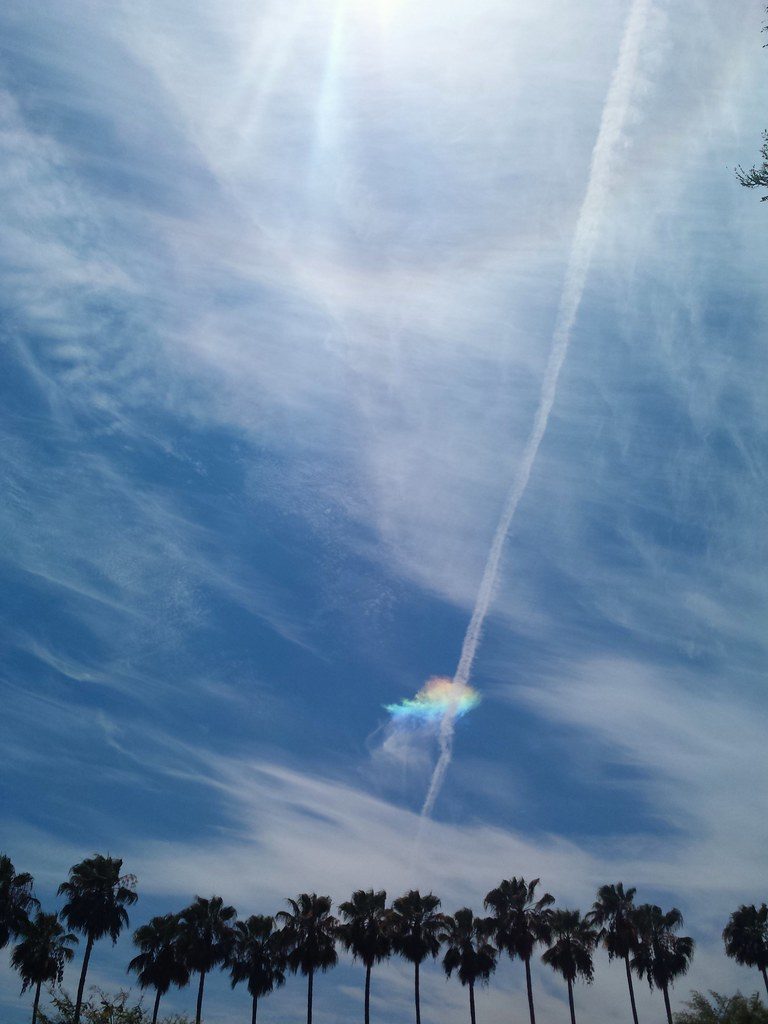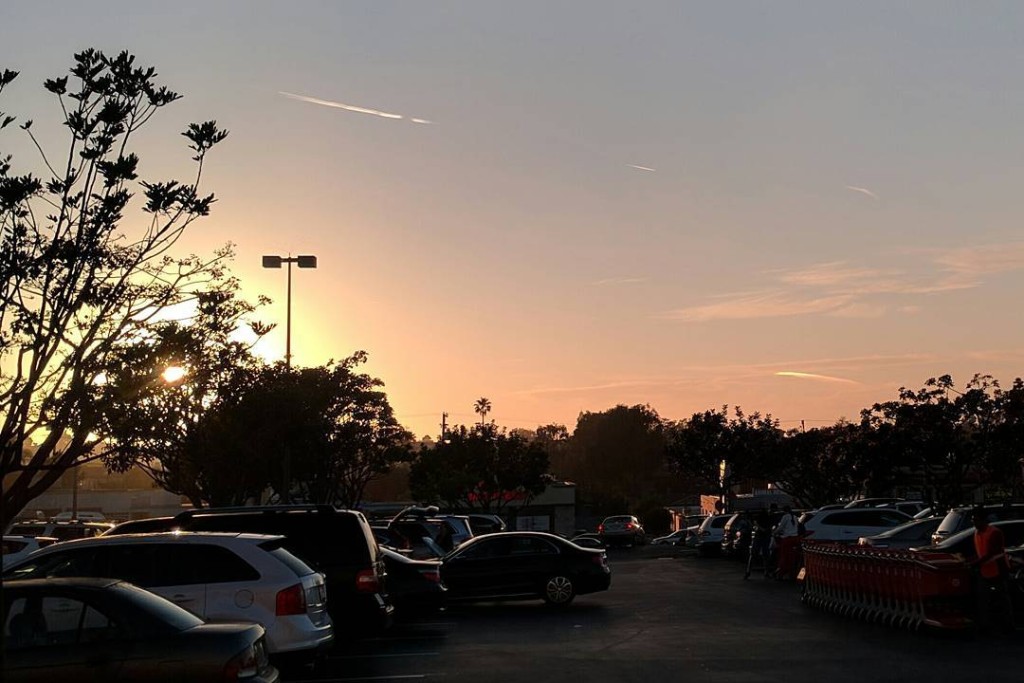
The bright line above the sun is just a contrail, high enough to catch the light without being tinted orange. The one off to the right is a sundog, ice crystals reflecting the sunlight. When I saw it I thought it was too far away to be an ordinary sundog, and might be part of a less common halo, but once I looked at how far away it appeared on camera (it’s all about the angle) I realized it was in the right place.
Tag: halo
Eclipse on the Hill
Clouds and timing squashed the “supermoon” and “blood moon” effects here, but it was still the most unusual lunar eclipse I’ve experienced.
Usually I’ll stay up late or get up early and go outside to watch the eclipse by myself. Last year I took my then-three-year-old son out to watch an eclipse around midnight.
Tonight’s eclipse got underway before local moonrise, and I wanted to see it as soon as possible. So J. (now four and a half) and I went out to an intersection in a residential neighborhood near the top of a hill with a clear view of the eastern horizon. We arrived at sunset, and two other people were looking eastward: a woman with a camera and full tripod, and a man with binoculars. The four of us all set up on a triangular traffic island on the northern side of the intersection.
Flat layers of clouds streaked the sky, and we worried that there might not be much to see at all, but it was only a few minutes before a slightly-off crescent moon rose due east of us, right in line with the street. Continue reading
Rainbow Cloud
I noticed the halo around the sun as soon as I walked out the door for lunch on Thursday. The rainbow cloud? That appeared as I walked past a building. I saw it as soon as the southern sky came into view again.
The colors got more intense over the next few minutes, and I kept taking photos until my phone locked up. I stood there watching the colors intensify, then fade, while I pulled out the battery and waited for the phone to reboot.
A man who’d been sitting nearby, buried in his phone, looked up wondering what I was taking pictures of. He’d never seen anything like it before, and wondered what it was, and fortunately I was able to answer.
At the right angle, ice crystals in a cirrus cloud refract sunlight to produce a feathery rainbow effect. The circumhorizon arc runs parallel to the horizon, and while it can be long, it’s usually only seen in fragments like this. I’ve only seen a few of these myself, and it’s been years since I’ve seen one this intense. I took this photo through my polarized sunglasses, but the colors were bright even without them.
When my phone froze, he offered to send me one of his pictures just in case mine hadn’t actually saved. Fortunately they had, and I actually posted to Flickr several hours before his message made it through the cell network.
Within a few minutes, the cloud had drifted out of alignment, and the colors had faded completely.
An hour later, on the way back from lunch, I noticed a longer patch in a smoother cloud layer, but it was faint enough that I could only barely see it with my sunglasses on. Without them, it faded completely into the glare.
If I’d had my better camera with the zoom lens, I would have gotten some better shots of just the bright cloud. Then again, I wouldn’t have been carrying it with me to lunch, and the effect was gone in the time it would have taken to run back in and get it. So it’s probably just as well I stayed and watched instead.
Funny thing: I posted a cropped view on on Instagram featuring just the arc fragment and contrail. When I went back to look at the #rainbowcloud tag last night, I found no less than SIX other photos of what was clearly the same cloud at various points in its five-minute lifetime!
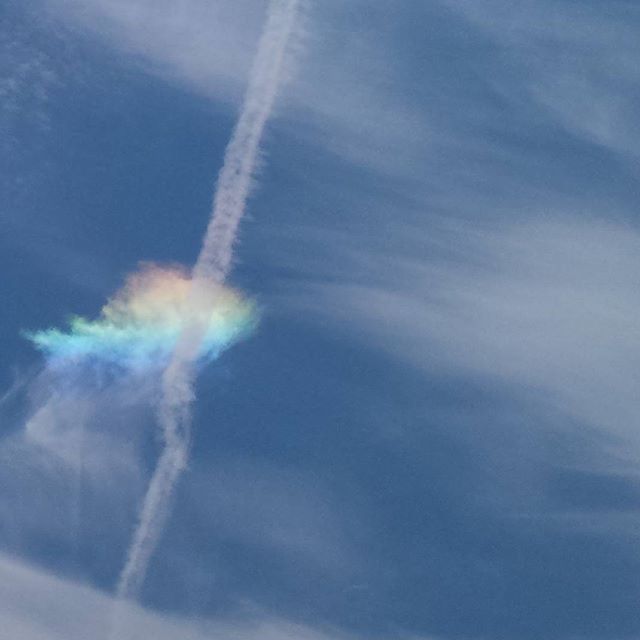
Palm Tree and Halo
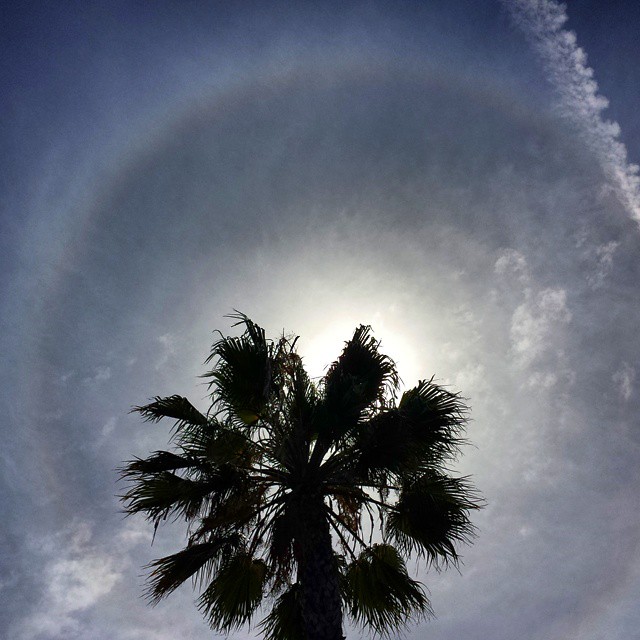
There was enough glare that I couldn’t see anything on the screen to frame the shot, but it worked out just fine.
Halo achievement unlocked: Spotted a parhelic circle.
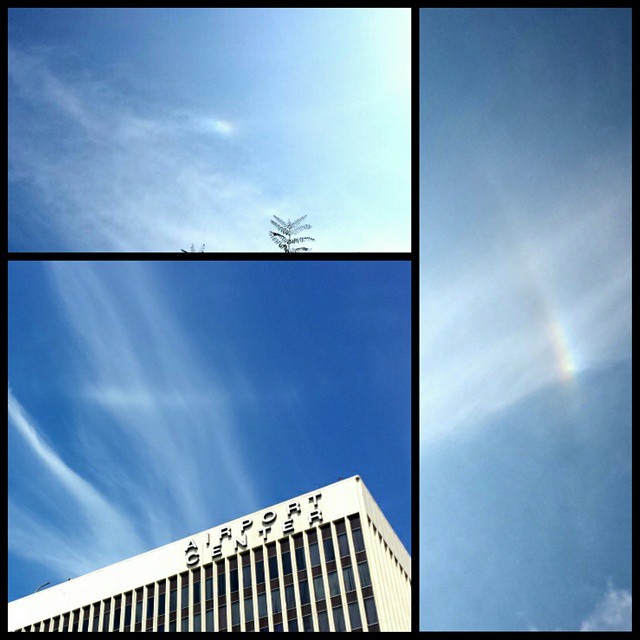
Sun halo fragments, clockwise from upper left:
- A sundog to the left of the sun.
- Part of a 22° circular halo to the right.
- Part of a parhelic circle (I think) in the opposite direction.
I spotted these just walking to lunch today, shortly after noon (well, DST noon). I wasn’t sure what I was seeing at first with the parhelic circle. It was clearly too smooth and regular to be part of the clouds surrounding it, but I’d never actually seen one before. Sundogs and 22-degree halos are a lot more common, even in the Los Angeles area.
After looking around for other halos, spotting the sundog and the 22°, and checking the height of both the sun and the mystery arc, I realized it was probably part of the parhelic circle, which when complete is a white circle running around the entire sky at the same altitude as the sun.
It wasn’t clear to the eye, but in the (slightly contrast-enhanced) photo of the sundog, it looks like the circle extends through it…which suggests to me that maybe I have seen it before. I’ve seen what I thought were elongated sundogs, but maybe they were sundogs with small fragments of this halo.
Halos like these are caused by reflections of sunlight inside ice crystals, sometimes near the ground and sometimes, as in this case, up in the sky. Different shapes, sizes and arrangements of crystals create different paths to the eye, which make different halos.
